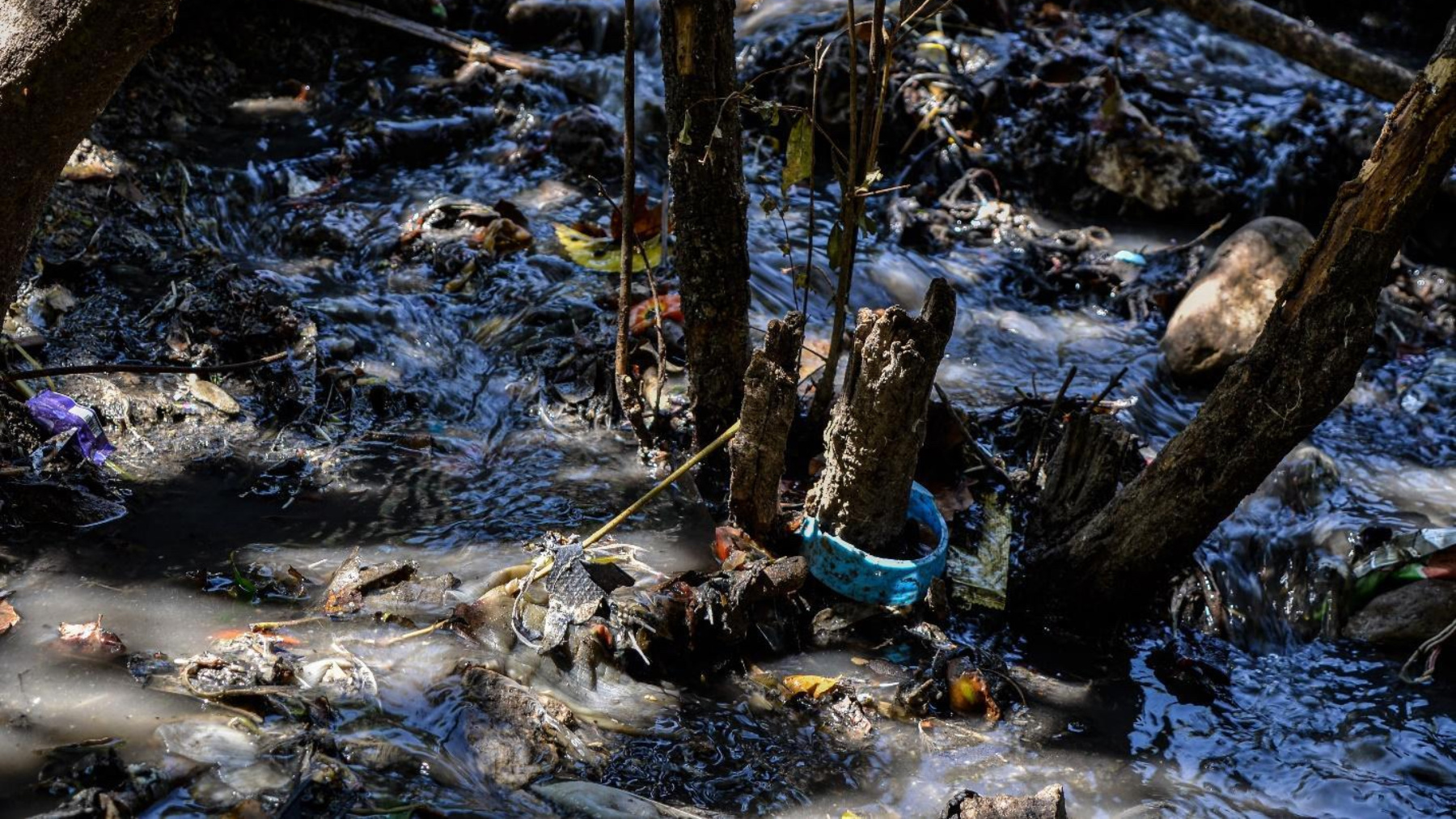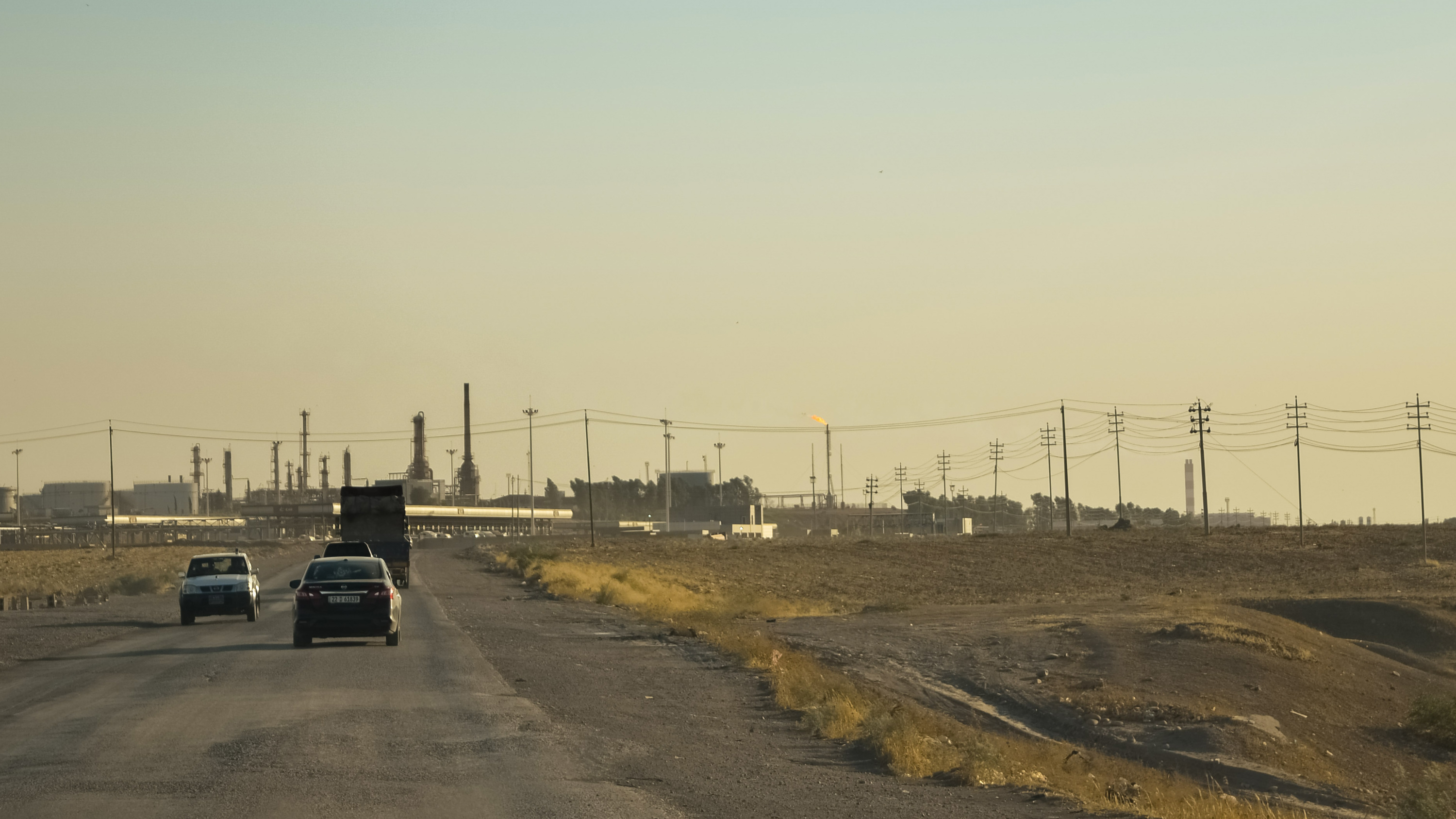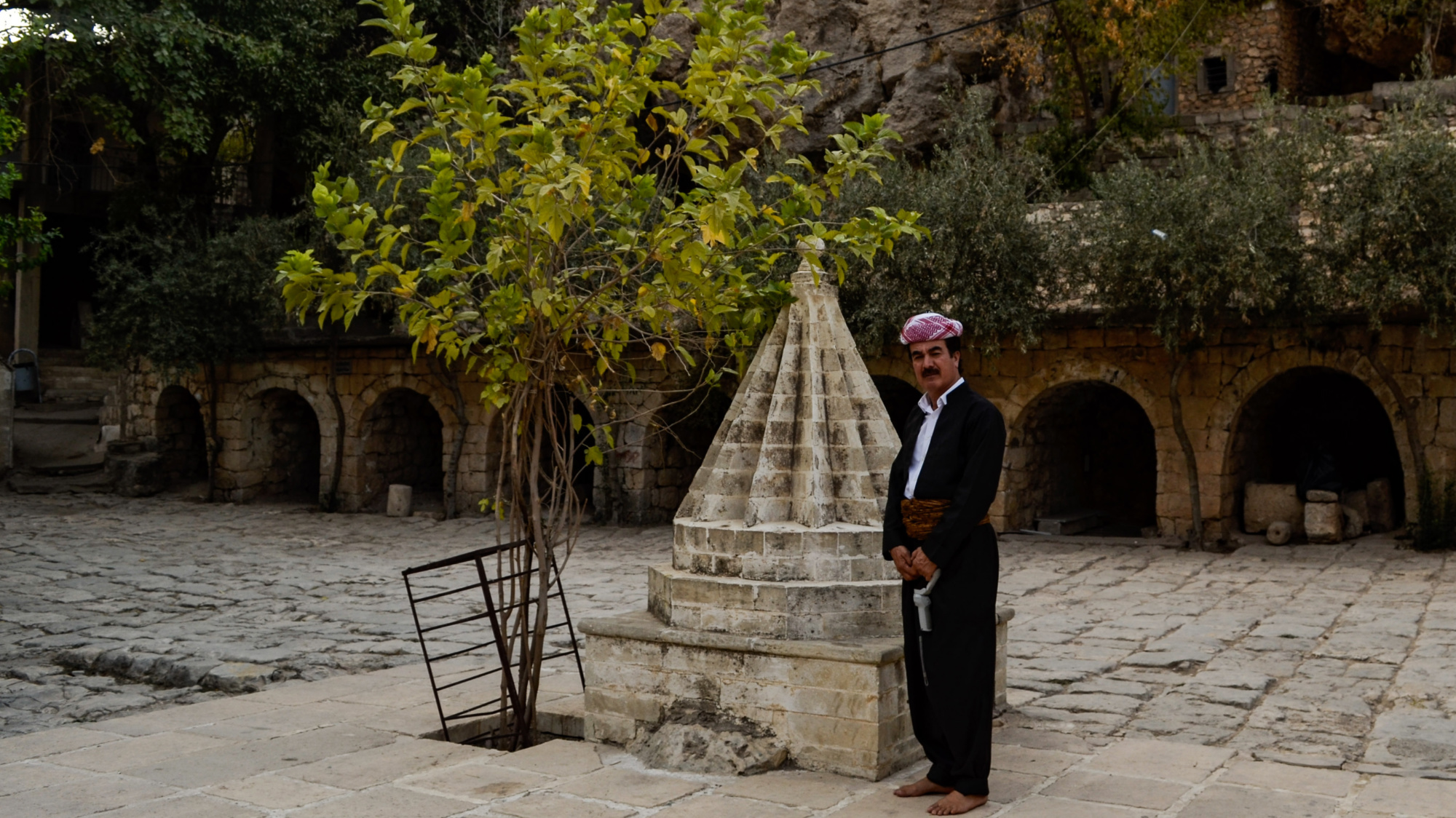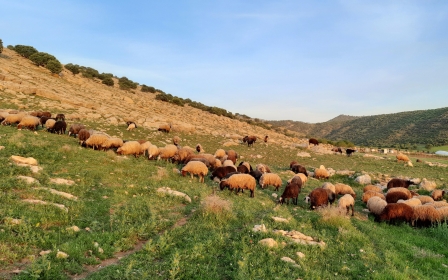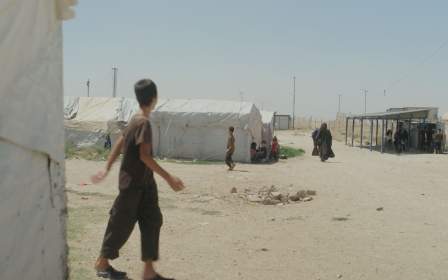Iraq: Oil refinery threatens health of refugees in camp
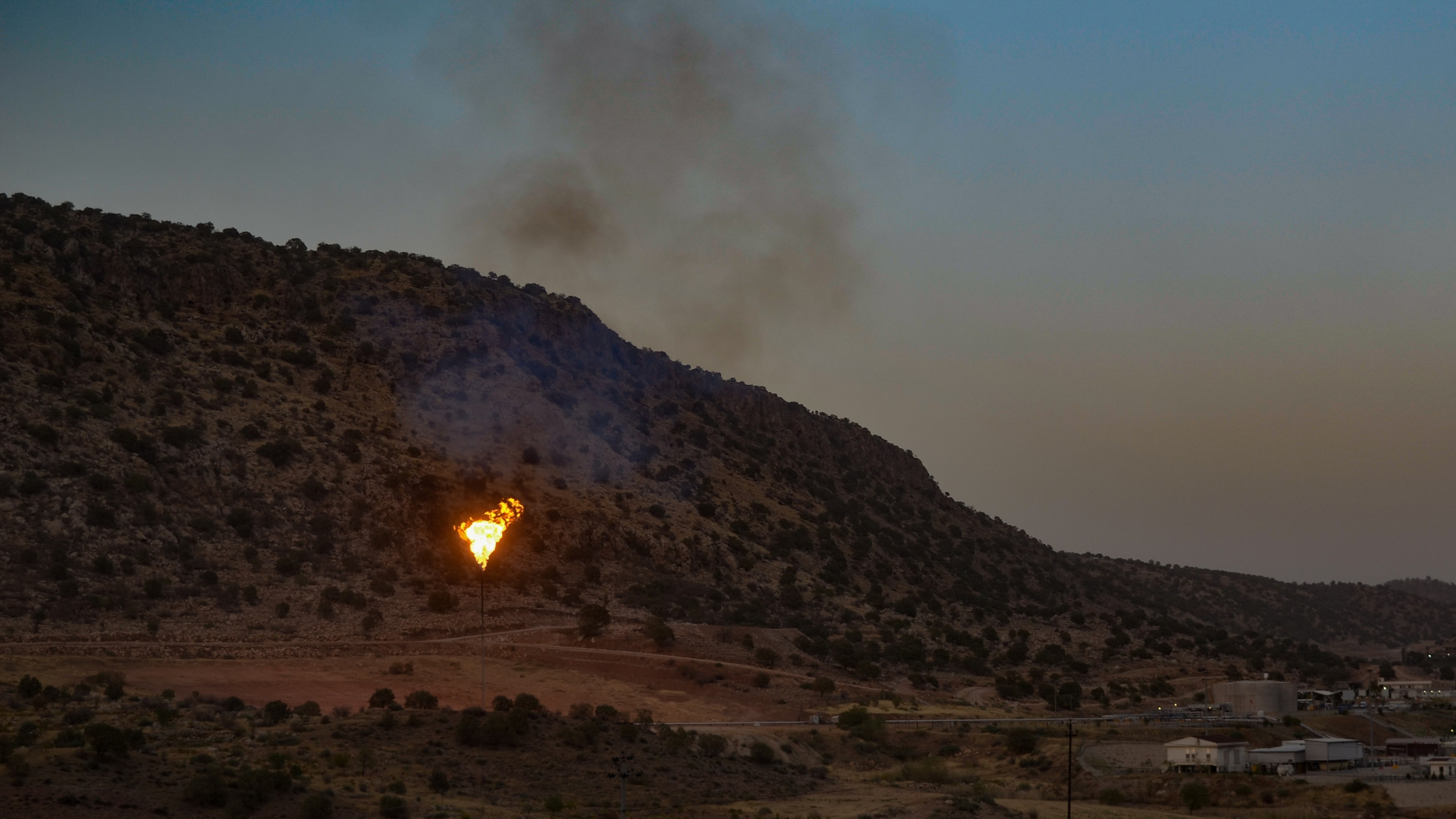
When the Kawergosk refugee camp first opened north of Erbil, capital of the autonomous Kurdistan region of Iraq (KRI) in 2013, things ran smoothly.
Schools and a medical point were opened, rubbish was collected and drinking water was available to the thousands of Syrian refugees fleeing civil war and the rise of the Islamic State (IS) group at home.
"At Kawergosk camp, you can drink the water," one NGO proudly announced in 2017, rejoicing that humanitarian efforts had "enhanced people's quality of life and reduced the incidence of diarrhoea and waterborne illness to almost zero".
But as funding dwindled over the years and many charities and organisations left, the celebrated "quality of life" crumbled like a sandcastle. Then the clean water ran out.
"None of the camp's four water wells work any more," Azaat Zardesh*, an activist in the camp, tells Middle East Eye. "Two were taken out of service in 2019, and there isn't enough fuel to operate the remaining ones."
Standing on the banks of the nearby Zab river, a major tributary of the Tigris, Zardesh points to a stagnant pond where camp residents now come to collect water.
One of its banks is a heap of trash: since the beginning of July 2022, when the UN's refugee agency handed over responsibility for water and sanitation services to the government, residents have been grappling with piles of waste on the streets of the camp.
"We know this water is no good, but we don't have a choice," Zardesh says.
The situation in Kawergosk mirrors the plight of other displaced communities in Iraqi Kurdistan which are exposed to heavy environmental pollution stemming from a lack of infrastructure, chronic mismanagement and industrial sources, in particular from the oil sector.
Undesirable locations
Pollution is widespread in Iraqi Kurdistan, but refugees and internally displaced persons (IDPs) are particularly exposed due to their precarious economic situation.
Chased from their homes by war, many live in crowded "temporary" settlements where water and waste management pose huge challenges. Compounding these issues is the fact that many settlements were set up in undesirable locations such as industrial belts, sandstorm-exposed deserts or on the fringes of oil fields.
Kawergosk camp's 8,000 residents live within a few kilometres of an oil refinery and several flaring pits, a combustion device that burns the flammable gases released during the extraction of crude oil.
Flaring is a cost-effective but environmentally noxious way to get rid of the flammable gas associated with oil extraction. On average, a single flaring pit releases the equivalent of 400m tonnes of CO2 into the atmosphere annually, and flares contribute to around one percent of global greenhouse gas emissions.
The combustion process can also release various toxic components into the air, including particulate matter, tiny particles that, once breathed in, are small enough to enter and settle in internal organs. Exposure to this particulate matter can cause breathing diseases, premature births and certain types of cancer.
Ten years after moving to Kawergosk, some residents are wary of the flaring's impact on their health. Zardesh worries about the number of cancer cases in his neighbourhood, which reached half a dozen over the course of a year, a rate he thinks is abnormally high.
There are no publicly available, recent data on major health issues in the area, but in 2013 and 2014, when the camp was established, weekly health bulletins were published by medical organisations serving Kawergosk. Although limited in time, the records point toward an abnormally high occurrence of respiratory illnesses among camp residents.
Most of these bulletins flagged respiratory tract infections as the main cause of acute health conditions in the camp, and asthma among the top five causes of chronic illness.
In April 2014, doctors in the Syrian refugee camp Domiz recorded around 1,700 cases of upper respiratory tract infection among the more than 55,000 people. In Kawergosk, 1,200 cases were recorded for only 13,000 residents. In both camps, these infections represented 36 percent of illnesses recorded that month. Similar trends were detected in other months.
Sanctuaries under siege
Another group dangerously exposed to oil-related pollution are the Yazidis, a Kurdish-speaking religious minority among the most ancient communities of Iraq.
Persecuted for their unique faith, Yazidis have survived multiple genocide attempts throughout their history, the latest of which was carried out by the IS, which occupied the Yazidi homeland region of Sinjar in 2014. More than 200,000 are still displaced in KRI.
Around 40 Yazidi shrines were destroyed by IS, but Lalish, their holiest temple, still stands, a tribute to resilience and an essential spiritual centre for the community. Dotted with fig and olive trees, the complex contains several shrines and a stream of holy water in which pilgrims baptise newborns.
"Everything in this valley is holy," Luqman Sulaiman, a media activist in Lalish, tells MEE. "The trees, the ground, the water and the air... everything."
To respect the site, visitors are asked to remove their shoes before entering the complex, which is as large as a village. Pilgrims roam barefoot around the shrines and the orchards.
But despite efforts to nurture the holiness of their temple, Yazidis have been powerless against the insidious threat seeping through the valley. Dozens of oil wells have been drilled near Lalish over the past decades, some within sight of the temple.
“One of our sacred texts mentions that the air is the basis of the universe," Badal Shamo, the author of several books on the Yazidi faith, tells MEE. But at the bottom of the valley, a flaring pit spits thick smoke into the sky.
"Our religion is a religion founded on respect for nature," he says.
'People who have money can buy water bottles to drink and use the river water to wash. But what about those who can't afford it?'
- Azaat Zardesh, camp activist
"For example, cutting these trees is forbidden, because we respect all living things. We only take wood from dead, broken or sick trees. We have festivals during which it is not permitted to slaughter animals. And we are not allowed to spit on the ground, because the soil must be respected."
For him and many others, the closeness of the flares to the holiest of Yazidi sites is a blow to their culture.
Taking action
One way to limit the impact of oil fields on nearby communities is to end flaring, which directly contributes to air pollution.
In August 2021, Kurdish authorities announced a total ban on flaring as of January 2023, giving oil companies 18 months to find an alternative. But this measure will be hard to implement.
One alternative to flaring is to capture the associated gas, process it and commercialise it as a source of energy, an operation that is rarely profitable in remote oil fields. Another is to compress the gas and re-inject it into the field. Both options require long-term investments that many oil companies are unwilling to make alone.
Meanwhile, Kurdish authorities have little leverage against oil companies. The Kurds are enmeshed in a legal dispute with the Iraqi federal government over oil rights, and several foreign firms have already left to avoid being blacklisted by Baghdad.
Additionally, Kurdistan's financial autonomy hinges on its ability to sell oil abroad, with oil sales representing at least 85 percent of the KRI's budget.
So far, little progress has been made to end flaring. A June 2022 investigation, which used satellite imagery to monitor the flares, found that on average, flaring has not decreased since the ultimatum was issued.
With so much of the region's economy dependent on oil, it seems unlikely that authorities will crackdown on companies over environmental concerns.
*Some names have been changed for security reasons
Middle East Eye propose une couverture et une analyse indépendantes et incomparables du Moyen-Orient, de l’Afrique du Nord et d’autres régions du monde. Pour en savoir plus sur la reprise de ce contenu et les frais qui s’appliquent, veuillez remplir ce formulaire [en anglais]. Pour en savoir plus sur MEE, cliquez ici [en anglais].


